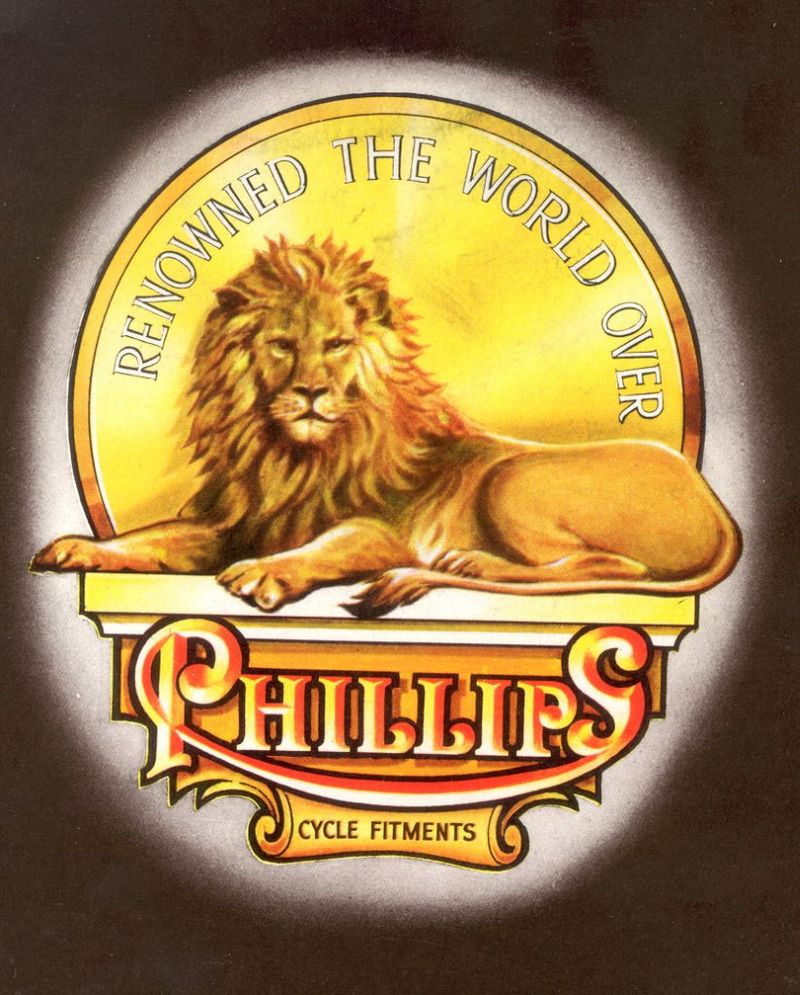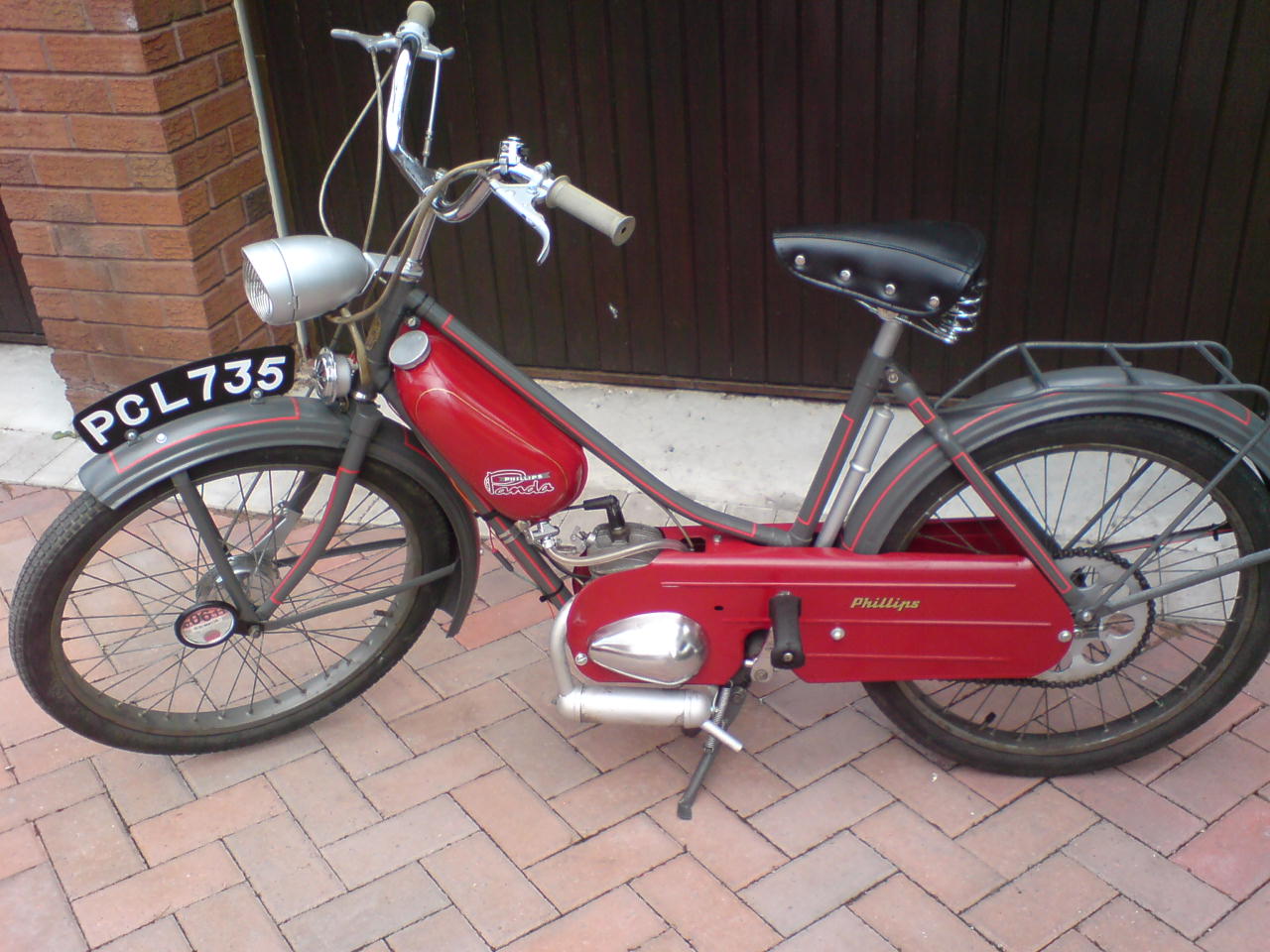Phillips Cycles
 Mon, October 18, 2021
Mon, October 18, 2021  I recently came across an old Bicycle Trade Magazine dated 1952 and read an article about Phillips cycles, a large British bicycle manufacturer back in the days when Britain ruled the world in the bicycle industry, with most of the bikes being made in Birmingham, England.
I recently came across an old Bicycle Trade Magazine dated 1952 and read an article about Phillips cycles, a large British bicycle manufacturer back in the days when Britain ruled the world in the bicycle industry, with most of the bikes being made in Birmingham, England.
In 1892 two young men named J. A. Phillips and E.W. Bohle traveled from Manchester to Birmingham, and went into business making bicycle pedals. Within a few weeks with 25 employees they had to move to a larger premises. Over the next 15 years a number of moves were made, always in order to gain more space. J. A. Phillips gave his name to the company, E.W. Bohle was managing director until the early 1920s.
By the turn of the century the company was making many different bicycle components, and in 1908 they moved to what would become their permanent location on Bridge Street, Smethwick, a district of Birmingham. Three years later they produced their first complete bicycle, and by 1913 where exporting bicycles all over the world at the rate of 1,200 per week.
One year later in 1914 a fire which started in the enameling shop, destroyed the whole factory. It took six years to rebuild and to get back into their former rate of production. The company prospered once more, and by the end of the 1920s the company could proudly say that they sold bicycles in every country of the world with the exception of Russia and Japan.
 Ad from British Cycles and Motor Cycles Overseas. Aug-Sept 1952
Ad from British Cycles and Motor Cycles Overseas. Aug-Sept 1952
By 1935 the company opened another factory a half a mile away in Downing Street, Handsworth. The Phillips Company continued to expand until the outbreak of WWII, when in common with the rest of British industry they switched from bicycles to manufacturing munitions and various gun parts.
They produced twenty-millimeter Oerlikon shells at the rate of 81,000 per week at one stage and throughout the war a staggering 89,000,000 shells were produced. They also made Sten gun barrels at the rate of 4,000 per day, and parts for anti-tank guns.
The factory was hit by German bombs at one time, and three acres of the factory roof was blown off, but in six weeks full production was restored. After the war in 1946, the Phillips Company bought another factory that had been a wartime munitions factory in Newtown, Montgomeryshire in Wales.
Phillips Cycles would have probably been at the peak of their success, as production would have been at its highest in 1952 when the magazine article that prompted this piece was published. The company had survived a fire, the Great Depression, and WWII to become the second largest bicycle manufacturer in the UK.
Today the name will be unknown to most but for a few collectors and as a distant memory in the minds of a few old-timers like myself. The bicycle industry World-wide saw a rapid decline though the 1960s and 1970s. As post war economies prospered and the production of automobiles increased, so too the demand for bicycles decreased.
 Like many bicycle manufacturers, Phillips did venture briefly into moped production in 1960.
Like many bicycle manufacturers, Phillips did venture briefly into moped production in 1960.
During this period, it was only in third world countries that the masses used bicycles as transport, and by then they were producing their own rather than importing them.
Like so many other UK bicycle brands they were eventually taken over by Raleigh Industries in the early 1980s, (The largest remaining bicycle company.) and soon after the Phillips name disappeared. Raleigh itself is a part of the Tube Investments Group.
A short Wikipedia entry does say that the Phillips name is licensed by Raleigh and the brand is still produced and is known in China, India, and other far eastern countries. So, in a small way the company slogan of, “Renowned the world over,” is still somewhat valid.



















Reader Comments (2)
I was really getting into cycling in the late 60's-early 70's, as the market was imploding.
I was well aware that TI was sucking up everyone in the UK (and elsewhere). They apparently thought that scale would save them, but it was not to be.
I desperately wanted a Raleigh Professional (Mk IV I think) but just couldn't afford it.
I ended up with a Japanese bike, a very fine Tange frame and wonderful Sun Tour equipment.
From there went on to work in bike shops and put my own bikes together.
I probably would have become a serious cyclist if I had been born a few years earlier.
My first bicycle was a Phillips Pilot.
It was 1964 and I was not yet in kindergarten.
It was Blue, so a step through frame.
My mother noting she wanted Grandkids one day.
Started with training wheels.
On two wheels looked suspicious.
They came off late, I was getting pretty good at taking corners like a rider of a British racing trike. Had to relearn.
This started my keen interest in bicycles.
As I now understand this was already after Raleigh was running the show.
In a closing of the Circle, when my very younger sister wanted to learn to ride she started on the Raleigh version, a Mountie.
That bike was retained by my grandfather and my daughter learned on that same bike, decades on. Great geometry for a first bike, lost by the current manufacturers.
When I was in high school my Scottish grandmother explained why Boys bikes were Red and Girls Blue. The atypical grade school uniforms so matched.
The Blue, the Blue, the Bonnie Blue…the Blue that should be worn…